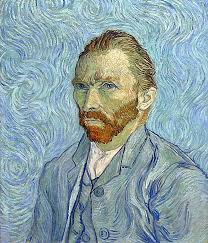Welcome to the Famous Replacement Child monthly feature! Our first profile is about Vincent Van Gogh, reprinted with permission from Replacement Children: The Unconscious Script, by Rita Battat and Dr. Abigail Brenner. We hope you find these interesting and informative. Next month we’ll be featuring musician John Coltrane.
Write to us at letters@replacementchild.com with more ideas about what you would like to see on this blog, and on our site in general.
By Rita Battat/Abigail Brenner, in Replacement Children, The Unconscious Script (2020)
Vincent van Gogh
Vincent Van Gogh was born on March 30, 1853 to Theodorus Van Gogh and Anna Cornelius Carbentus, a year to the day after the birth of a stillborn son. The deceased brother and Van Gogh carried the identical name—Vincent Willem Van Gogh. They even shared the same number, twenty-nine, in the parish register. The family lived in the rectory of the parish in which Vincent’s father was minister and so Vincent passed his brother’s grave—same name, same birth date, except for the year—daily on his way to school. He would always be ‘second’, he thought, on many levels, not just birth order.

Due to his family’s financial difficulty, Vincent had to leave school and go to work. His first job was in his uncle’s art dealership. Fluent in several languages, Vincent moved to London, remaining in the field of art. But he denounced the art world when his marriage proposal to Eugenie Loyer was rejected. Next, he moved to theology, teaching in a Methodist school and preaching. He entertained the idea of studying theology but was denied entrance to school. In 1880, Van Gogh decided to become an artist and was financially supported by his brother, Theo.
Vincent had a penchant for troubled women. His widowed cousin, Kate, rejected him and he eventually took up with Clasina, an alcoholic prostitute. When his family threatened to withdraw financial support, he left Clasina, wandering for a while before he moved to Paris.
There he studied with Toulouse-Lautrec and Pissarro.
Van Gogh was hospitalized on a few occasions and given various diagnoses including epilepsy, schizophrenia, and syphilis, although some biographers have suggested that his suffering was largely caused by replacing his deceased brother. In “Van Gogh’s Fantasies of Replacement: Being a Double and a Twin,” Harold P. Blum theorizes that a replacement child may fantasize that he/she is the “embodiment of the dead child” and suggests that perhaps Van Gogh’s fantasies about being a twin/double contributed to his severe pathology, but also to his exquisite creativity as an artist.
In her paper, “Life after Death: The Replacement Child’s Search for Self,” Kristina
Schellinski notes;
“The idealized-presence-through-absence of the dead brother made him fall in his own eyes. Vincent, the painter failed, where the other Vincent—dead—would have succeeded… he rivaled against a dead person against whom he could never win. His success was—paradoxically—an attack on the dead brother’s “fantasized” record.”
The only long-term close emotional connection Van Gogh had was with his brother, Theo who was four years younger. So closely bound was Van Gogh to his beloved brother that he found Theo’s marriage to Jo Bonger extremely hard to tolerate. But the straw that may have broken the camel’s back was the birth of Theo’s first son, Vincent Willem, again with the same name, was born on January 31, 1890. Six months later Van Gogh suffered a psychotic break, shot himself on July 27th, and died on July 29th at the age of thirty-seven.
P.S. There is a whole love story with a painter, a homosexual aspect